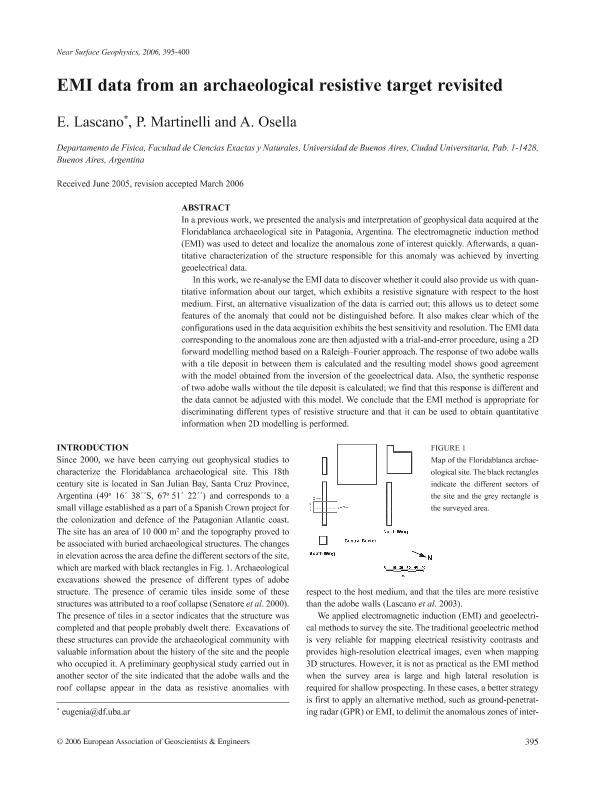Artículo
EMI data from an archaeological resistive target revisited
Fecha de publicación:
12/2006
Editorial:
European Association of Geoscientists & Engineers
Revista:
Near Surface Geophysics
ISSN:
1569-4445
Idioma:
Inglés
Tipo de recurso:
Artículo publicado
Clasificación temática:
Resumen
In a previous work, we presented the analysis and interpretation of geophysical data acquired at the Floridablanca archaeological site in Patagonia, Argentina. The electromagnetic induction method (EMI) was used to detect and localize the anomalous zone of interest quickly. Afterwards, a quantitative characterization of the structure responsible for this anomaly was achieved by inverting geoelectrical data. In this work, we re-analyse the EMI data to discover whether it could also provide us with quantitative information about our target, which exhibits a resistive signature with respect to the host medium. First, an alternative visualization of the data is carried out; this allows us to detect some features of the anomaly that could not be distinguished before. It also makes clear which of the configurations used in the data acquisition exhibits the best sensitivity and resolution. The EMI data corresponding to the anomalous zone are then adjusted with a trial-and-error procedure, using a 2D forward modelling method based on a Raleigh–Fourier approach. The response of two adobe walls with a tile deposit in between them is calculated and the resulting model shows good agreement with the model obtained from the inversion of the geoelectrical data. Also, the synthetic response of two adobe walls without the tile deposit is calculated; we find that this response is different and the data cannot be adjusted with this model. We conclude that the EMI method is appropriate for discriminating different types of resistive structure and that it can be used to obtain quantitative information when 2D modelling is performed.
Palabras clave:
-
Archivos asociados
Licencia
Identificadores
Colecciones
Articulos(IFIBA)
Articulos de INST.DE FISICA DE BUENOS AIRES
Articulos de INST.DE FISICA DE BUENOS AIRES
Citación
Lascano, Marcelo Ezequiel; Martinelli, Hilda Patricia; Osella, Ana Maria; EMI data from an archaeological resistive target revisited; European Association of Geoscientists & Engineers; Near Surface Geophysics; 4; 6; 12-2006; 395-400
Compartir
Altmétricas




